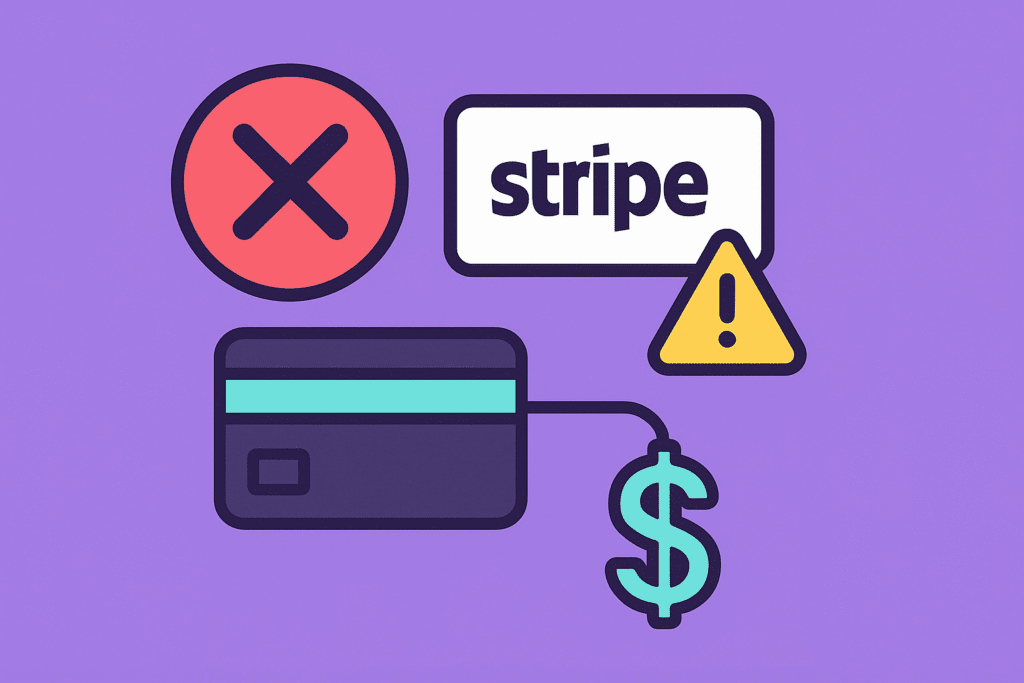AI Website Builder for Meal Prep Services: Streamline Your Online Presence Efficiently

Meal prep services face unique challenges when it comes to building an online presence that clearly showcases menus, subscription options, and customer engagement. An AI website builder tailored specifically for these services helps create professional, customizable websites quickly and efficiently without requiring technical skills. An AI website builder for meal prep services streamlines the process […]
Implementing A/B Testing for Features: A Strategic Guide

A/B testing is a cornerstone of data-driven decision-making in product development. It allows you to experiment with changes to features and compare their impact before committing to full deployment. From UI elements to pricing models, A/B testing helps you validate assumptions, optimize user experience, and reduce the risk of failed product updates. This guide covers […]
Building a Community Around Your App: Strategies for Engagement and Retention

In today’s competitive app market, simply offering a great product isn’t enough. Users crave connection, engagement, and a sense of belonging. That’s why building a community around your app is more than a marketing tactic—it’s a long-term strategy for success. A vibrant user community can significantly boost engagement, reduce churn, increase lifetime value, and transform […]
Understanding the Basics of Frontend Development

In today’s digital age, having a strong online presence is crucial for businesses and individuals alike. A well-designed website can make a significant difference in attracting and retaining visitors. But what makes a website visually appealing and user-friendly? The answer lies in frontend development. In this article, we’ll break down the basics of frontend development, explore its key components, and understand why it matters. What is Frontend Development? Frontend development, also known as client-side development, is the practice of converting data into a graphical interface. This process is done so that users can view and interact with the data through digital interaction using HTML, CSS, and JavaScript. Simply put, frontend development involves creating everything that users see and experience on a website or web application. The Role of a Frontend Developer Frontend developers are responsible for designing and implementing the visual and interactive elements of a website. They collaborate closely with designers to ensure that the website’s layout, color scheme, and overall design meet the desired aesthetic and functionality. Their primary goal is to create a seamless and engaging user experience. Collaborating with Designers Frontend developers work hand-in-hand with UI/UX designers to translate design mockups into functional web pages. This collaboration ensures that the visual design is both appealing and practical, aligning with the brand’s identity. Regular communication between designers and developers is crucial to maintaining consistency and achieving the desired results. Coding and Debugging A significant part of a frontend developer’s role involves writing clean, efficient code and continuously testing it for bugs. Debugging is essential to ensure that the website functions correctly across all devices and browsers. Developers use various tools and techniques to identify and fix issues promptly, maintaining website performance and reliability. Staying Updated with Trends The world of frontend development is dynamic, with new tools and technologies emerging regularly. Frontend developers must stay updated with the latest industry trends and advancements. Continuous learning and professional development are critical for developers to adapt to new frameworks, libraries, and best practices, ensuring they deliver cutting-edge solutions. Key Components of Frontend Development To build a successful frontend, developers rely on several key components. Let’s explore these essential elements: HTML: The Structure of Web Pages HTML, or HyperText Markup Language, is the backbone of any website. It provides the basic structure and content of a webpage. HTML uses a system of tags and attributes to define the elements that make up a webpage, such as headings, paragraphs, images, and links. Without HTML, there would be no way to display content on the web. Understanding HTML Tags HTML uses a variety of tags to define different elements on a webpage. These tags are enclosed in angle brackets and include opening and closing tags. Understanding the purpose of each tag, such as for paragraphs or for links, is fundamental to structuring a webpage effectively. Semantic HTML Semantic HTML refers to using HTML tags that convey the meaning of the content they enclose. Tags like , , and provide context about the content, improving accessibility and search engine optimization. Semantic HTML makes the webpage more understandable to both browsers and users. HTML5 Advancements HTML5 introduced several new features and elements that enhance the functionality of web pages. Features like and tags allow for the easy embedding of multimedia content. HTML5 also supports APIs for offline storage, geolocation, and drag-and-drop, enabling more interactive and powerful web applications. CSS: Styling the User Interface CSS, or Cascading Style Sheets, is responsible for the presentation and styling of a webpage. It allows developers to control the layout, colors, fonts, and spacing of elements on a page. With CSS, frontend developers can create visually appealing designs that enhance the user experience. CSS also enables responsive design, which ensures that websites look great on various devices, from desktops to smartphones. CSS Selectors and Properties CSS uses selectors to target HTML elements and apply styles to them. Understanding different selectors, such as class selectors (.classname) and ID selectors (#idname), is crucial for applying styles efficiently. Properties like color, margin, and padding allow developers to customize the appearance of elements. Responsive Design with CSS Responsive design is achieved through CSS techniques such as media queries and flexible grid layouts. Media queries enable developers to apply specific styles based on the device’s screen size. This adaptability ensures that the website remains user-friendly and visually consistent across various devices and screen resolutions. CSS Preprocessors CSS preprocessors like SASS and LESS introduce features like variables, nesting, and mixins, which enhance the flexibility and maintainability of CSS code. These tools enable developers to write cleaner, more organized stylesheets and automate repetitive tasks, improving workflow efficiency. JavaScript: Adding Interactivity JavaScript is a programming language that brings interactivity to a website. It enables developers to create dynamic elements such as image sliders, pop-up menus, and form validations. JavaScript is essential for enhancing user engagement and providing a more interactive and immersive experience. It can also be used to retrieve and display data from servers, making websites more dynamic and responsive. DOM Manipulation JavaScript allows developers to manipulate the Document Object Model (DOM), which represents the structure of a webpage. By dynamically changing the DOM, developers can update the content and layout of a webpage in response to user interactions without reloading the entire page. Event Handling JavaScript enables developers to add interactivity by responding to user actions like clicks, key presses, and mouse movements. Event listeners are used to detect these actions and trigger specific functions, allowing for real-time feedback and interaction on the webpage. JavaScript Frameworks and Libraries Frameworks and libraries like React, Angular, and Vue.js provide pre-built components and utilities that simplify the development of complex web applications. These tools promote code reuse, enhance performance, and enable developers to build sophisticated, dynamic interfaces with ease. The Importance of Responsive Design In today’s mobile-first world, responsive design is more important than ever. Responsive design refers to the practice of designing websites that adapt to different screen sizes and devices. With an increasing number of users accessing websites from smartphones and tablets, it’s crucial to ensure that websites are accessible and functional on all platforms. Benefits of Responsive Design User Interface Design: Creating Intuitive Experiences User Interface (UI) design focuses on the aesthetics and layout of a website. It involves designing intuitive interfaces that guide users through a website’s features and functionalities. A well-designed UI enhances the overall user experience and makes it easier for visitors to navigate and interact with a website. Principles of Effective UI Design Tools and Technologies in Frontend Development Frontend developers utilize a variety of tools and technologies to streamline their workflow and enhance productivity. Some popular tools include: Frameworks and Libraries Frameworks like React, Angular, and Vue.js provide pre-built components and libraries, making it easier to build complex and interactive web applications. These frameworks offer robust ecosystems that support rapid development and scalability. React React is a popular JavaScript library for building user interfaces, particularly single-page applications. Its component-based architecture promotes reusability and efficiency, allowing developers to create dynamic and responsive UI elements seamlessly. Angular […]
Understanding Your Customer Lifetime Value

In today’s competitive market, understanding your customers is more important than ever. One crucial metric that can help businesses make informed decisions is Customer Lifetime Value (CLV). But what exactly is CLV, and why should you care about it? This guide will walk you through the essentials of Customer Lifetime Value, why it’s important, and […]
Troubleshooting Stripe Payment Processing Errors

Stripe payment processing, while efficient, is not immune to errors. Understanding these issues is the first step toward resolving them effectively. Common Stripe Payment Processing Errors Before diving into solutions, it’s essential to understand the types of errors you might encounter with Stripe: Technical Stripe Errors Apart from the user-related issues, there can be technical glitches that disrupt payment processing: Troubleshooting Steps When faced with Stripe payment processing errors, a systematic approach to troubleshooting can save time and resolve issues effectively. Step 1: Identify the Error Start by identifying the specific error message you’re encountering. Stripe usually provides descriptive error messages that can guide you to the problem’s root cause. Understanding these messages can help you decide whether the issue is on the customer’s end, your server, or Stripe’s infrastructure. Step 2: Check Card Details If the error is related to card issues, double-check the card details. Ensure the card number, expiration date, and CVV are entered correctly. If the card is expired, request updated card information from the customer. Providing a user-friendly interface for card updates can enhance the customer experience and reduce friction during the payment process. Step 3: Verify Account Status For issues like insufficient funds or card declines, advise the customer to check with their bank. They might need to resolve account issues or use a different payment method. Encouraging customers to maintain a minimum balance for transactions can help reduce the frequency of this error. Step 4: Check API and Webhook Configurations For technical errors, review your API key configurations and webhook settings: Step 5: Monitor Stripe Status Visit https://status.stripe.com to check if there are any ongoing issues with Stripe’s services. If there is a reported outage, you may need to wait until it’s resolved. Subscribing to status updates can keep you informed about any potential disruptions in service. Step 6: Consult Stripe Documentation Stripe offers comprehensive https://stripe.com/docs and support resources. Consult these to find specific solutions tailored to your issue. Keeping abreast of the latest updates in the documentation can provide insights into new features and potential fixes for recurring issues. Advanced Troubleshooting For persistent or complex issues, advanced troubleshooting techniques can help identify and resolve problems more effectively. Log and Analyze Errors Enable error logging on your server to capture detailed information about the Stripe errors. This can help in diagnosing recurring issues and understanding the context of each error. Analyzing logs regularly can reveal patterns or trends that might point to a specific underlying problem. Test in Sandbox Mode If you’re unsure about certain configurations, test them in Stripe’s sandbox environment. This allows you to simulate transactions without affecting real data. Sandbox testing can help validate changes and prevent errors from affecting live transactions. Review Security Settings Ensure your security settings align with Stripe’s recommendations. This includes setting up fraud prevention measures like 3D Secure and AVS checks. Regularly reviewing and updating security settings can protect against emerging threats and enhance transaction security. When to Contact Stripe Support If you’ve tried all troubleshooting steps and still face issues, it might be time to contact Stripe support: Preventing Future Stripe Payment Issues Proactive measures can significantly reduce the likelihood of encountering payment processing errors in the future. Regularly Update Software Ensure your website or app is running the latest version of any software that interacts with Stripe. This includes […]
Common Stripe Payment Integration Challenges Explained

Integrating Stripe into your business’s payment system can revolutionize the way you handle transactions. This integration allows for seamless and secure payment processing, enhancing customer satisfaction and streamlining internal operations. However, like any technology, it comes with its own set of challenges. Understanding these common issues can save you time and frustration, ensuring a smoother […]
How Educators and Coaches Are Launching Apps Without Developers—And Scaling Their Impact

launch apps without developers In the past, building a web or mobile app to deliver courses, track student progress, or run a coaching business meant hiring developers, managing tech, and dealing with bugs. But now, non-technical founders in education and coaching are bypassing that struggle entirely. Thanks to Imagine.bo, educators are creating fully functional, secure, […]
